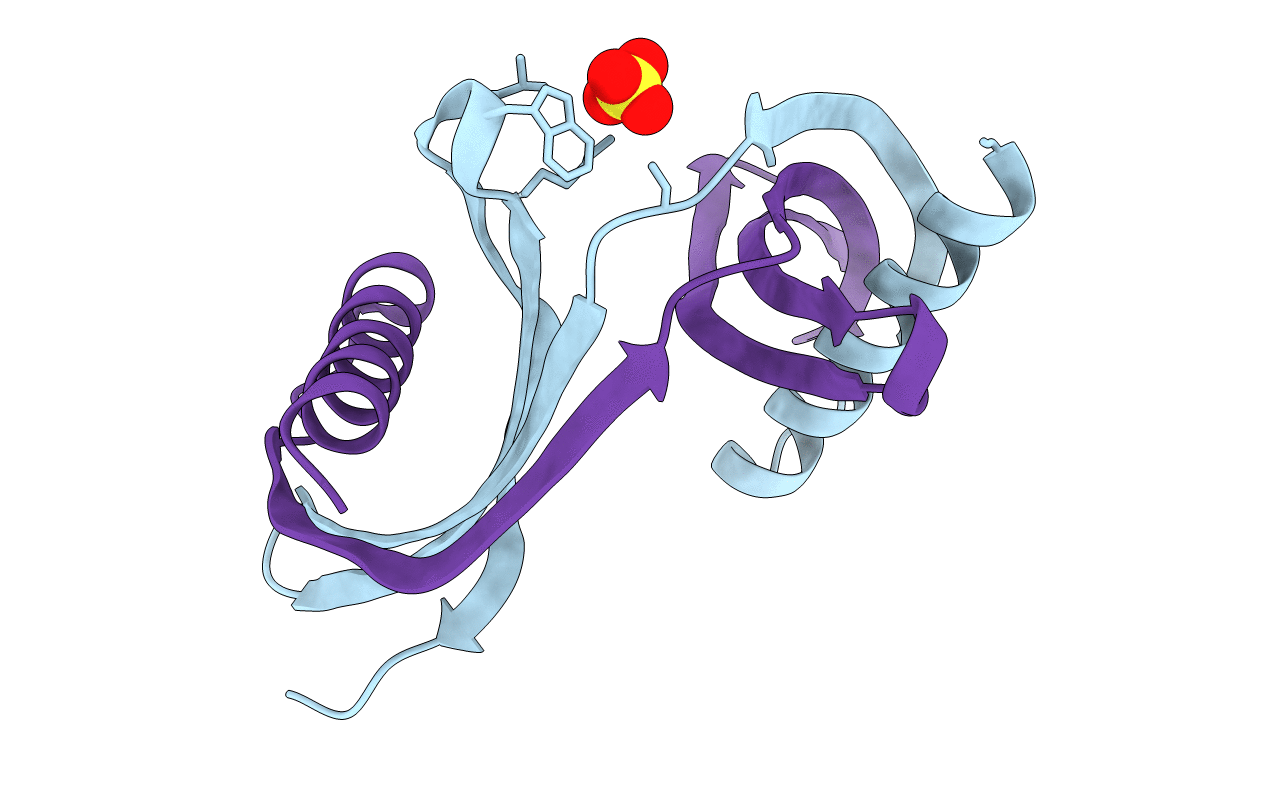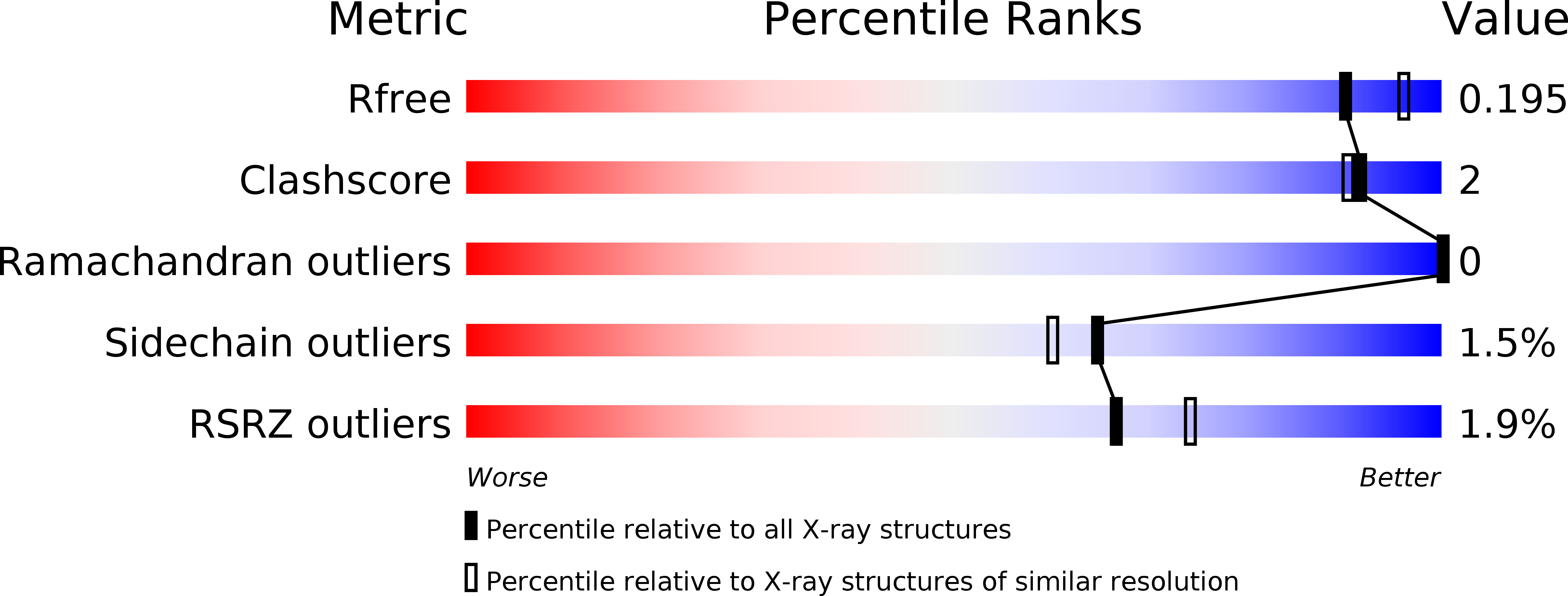
Deposition Date
2014-07-02
Release Date
2015-10-14
Last Version Date
2023-12-27
Entry Detail
PDB ID:
4TX4
Keywords:
Title:
Crystal Structure of a Single-Domain Cysteine Protease Inhibitor from Cowpea (Vigna unguiculata)
Biological Source:
Source Organism:
Vigna unguiculata (Taxon ID: 3917)
Host Organism:
Method Details:
Experimental Method:
Resolution:
1.95 Å
R-Value Free:
0.19
R-Value Work:
0.17
R-Value Observed:
0.17
Space Group:
P 21 21 21


